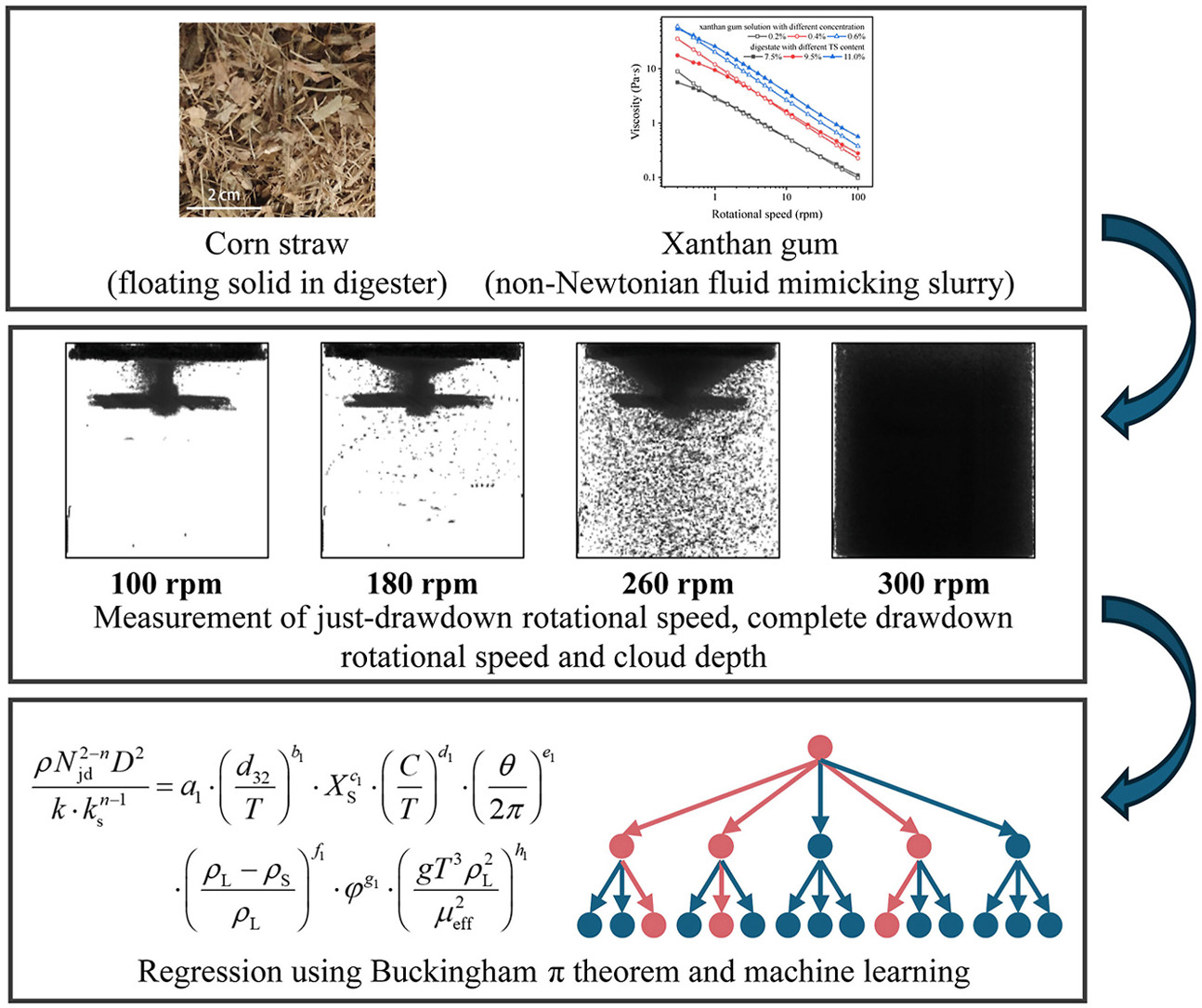• Mixing of floating straw particles in non-Newtonian fluid was investigated.
• Effects of five factors on drawdown rotational speeds and cloud depth were assessed.
• High liquid viscosity hindered the drawdown and suspension of dry straw particles.
• Rotational speed, impeller type and liquid viscosity affected the cloud depth.
Due to the low density and hydrophobicity, the corn straw (CS) particles tend to float on the liquid surface in the anaerobic digester, deteriorating the bioconversion efficiency and process stability. Although the mechanical mixing is widely used in digesters, the drawdown and suspension of CS in the non-Newtonian slurry have not been sufficiently studied. This paper investigated the effect of particle size, liquid viscosity, solid phase mass fraction, impeller type and off-bottom distance on the just-drawdown rotational speed (Njd), complete drawdown rotational speed (Ncd) and cloud depth (CD) of dry and wet straw particles in the stirred tank. The results showed that the distribution of dry and wet straw in the stirred tank significantly differed due to differences in density and wettability. The models built by dimensional analysis and machine learning were suitable for accurate predictions of specific variables. Based on the model analysis, the Njd of dry straw was mainly affected by the liquid viscosity, impeller type and off-bottom distance, as these factors determined the flow field of liquid phase for its drawdown. Njd of wet straw was related to the liquid viscosity and Ncd was influenced by impeller off-bottom distance. The CD of dry and wet straw particles were both affected by rotational speed, impeller type, and liquid viscosity, which were related to the mean flow and turbulence intensity in the tank. The results provide valuable references for the design and operation of mixing configurations for low-density feedstocks in the anaerobic digester.

